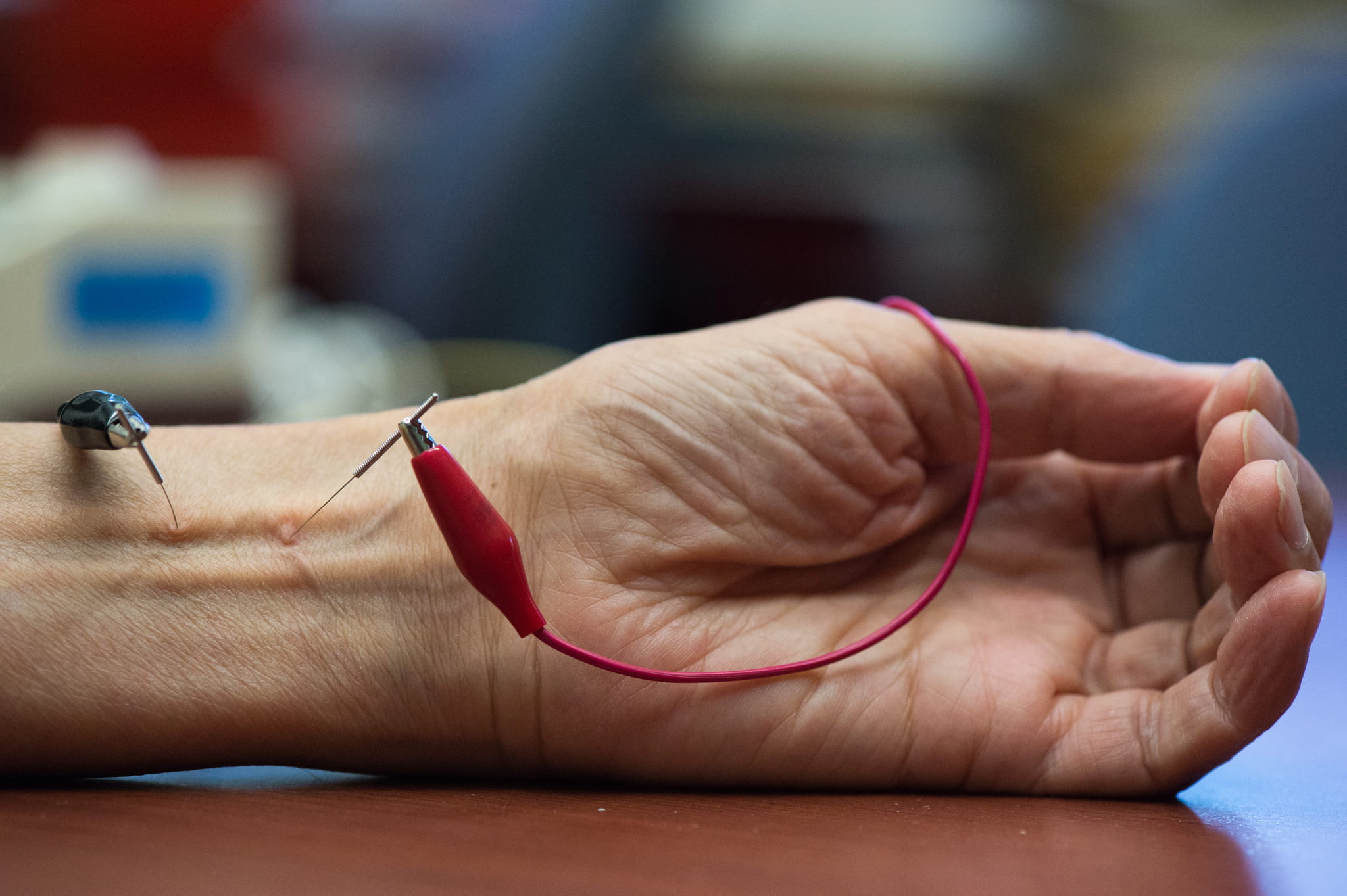Walkabout for water
Twelve UC undergrads go Down Under to study Aussie approaches to drought, conservation and resource management
Bright undergraduates from UC Irvine, UCLA and UC San Diego spent some of this summer Down Under, immersing themselves in drought solutions, wetlands design and related issues – sometimes literally.
“I thought it was ground, and it wasn’t. It was water, it was cold, and it got way deep,” says Clint Rosser, who’ll be a UC San Diego senior this fall, describing how he accidentally plunged waist-deep into a mucky wetland near Melbourne, Australia, in mid-July.
He and 11 others were part of this year’s Undergraduate Partnerships for International Research & Education Program Down Under, funded by the National Science Foundation. While submerged, Rosser asked his fellow student researchers to pass him a bottle so he could collect a water sample for pollutant analysis.
That enthusiasm on the part of the entire group impressed UC Irvine civil & environmental engineering professor Stanley Grant, who heads UCI Water – PIRE. The project links five universities in two water-stressed regions of the world: the U.S. Southwest and southeastern Australia. Each summer, promising University of California undergraduates in engineering, social ecology and other fields are selected for the six-week, two-continent educational experience.
“It’s just our second year, and already it’s grown tremendously – to 60 applicants for just 12 slots,” Grant says. “These students are smart and dedicated. They’re our future in terms of improving water quality and managing our shrinking supply better. Global climate change and population growth demand creative, low-energy, multidisciplinary and multi-benefit approaches to sustaining water resources.”
Besides seeing penguins, patting kangaroos and enjoying an Australian form of rugby, the group spent time in the field and in labs at UCI and the University of Melbourne, studying constructed wetlands and biofilters (called “rain gardens” in the U.S.). These natural systems are low-energy alternatives to conventional water and wastewater plants for treating sewage and urban runoff.
“The program was so eye-opening,” says Caitlin McAlpine, 22, who graduated from UCI in June with an environmental engineering degree. “It’s not just international differences in how the U.S. and Australia approach water treatment, but differences in governance and communication, as well as learning a lot about people doing work outside your own field.”
The students note that Australia appears far ahead of the southwestern U.S. in water management, partly by necessity after the decadelong Millennium Drought. Government officials and private citizens share a dedication to water efficiency that’s evident in low-flush toilets and signs boasting of the use of reclaimed water and native plants – not just beside highways but in residential front yards.
Most striking, they say, was how water officials maintain continuous communication with the populace, seeking genuine input and approval before they do anything, be it changing the plantings on a median or constructing large-scale swales. Such ongoing dialogue might be helpful in Southern California, the young scholars say, where residents are generally less aware of critical water shortages, even during the current historic drought.
In addition, water treatment facilities in Australia are developed with public access in mind – which contrasts sharply with what they saw in Orange County, where groundwater replenishment and other treatment areas are often closed off with chain-link fencing.
“What I really liked was how the wetlands in Australia look like parks and are a lot more humanistic, whereas the ones here are just not as inviting,” says Silvia Gonzalez, 20, a fourth-year UCI social ecology major. “There, people bike above them; they walk their dogs. They’re much more interactive with their wetlands. They’re designed a lot better.”
Having such wetlands is important “because they’re a lower-energy way to clean, manage or capture water,” says Maddy Walzem, who’s headed into her senior year as an environmental engineering major at UC San Diego. “I was impressed. They put a lot more time and money into them and dedicate a lot more area to building them.”
Grant says their observations are accurate. “Our Australian partners are world leaders in these topics,” he says, pointing to Little Stringybark Creek, which contains the world’s first distributed application of water treatment technologies in an urban catchment; a university-industry Cooperative Research Center on water-sensitive urban design; and the planet’s largest wastewater stabilization pond. “Here in the U.S., we tend to just steal water from everywhere.”
UCI postdoctoral researcher Janet Rowe, the outreach coordinator who organized the students’ packed schedule, says the highlight for most was the tour of the Western Australia water department – and not just because they were greeted with tea and cookies.
“They got to hear about its current research, interact with various professionals and also witness firsthand urban stream syndrome and how even a little development cuts biodiversity,” she says.
On July 25, the students delivered presentations about their findings in UCI’s McDonnell Douglas Engineering Auditorium. Topics included the efficiency of the wetlands studied in removing nitrogen, phosphorus and fecal indicator bacteria; and the connection between plant or zooplankton diversity and water’s dissolved oxygen, temperature, turbidity and nutrients.
The scholars are grateful to the leaders of the Undergraduate PIRE Program Down Under and say they had a wonderful time.
“It was one of the most immersive experiences I’ve been a part of,” says recent UC San Diego graduate Diana Kraikittikun. “Never have I learned so much so quickly and been exposed to so much practical and interdisciplinary knowledge. The people learning alongside me were impossibly bright and friendly, and the overall experience was just as much play as it was work.”



